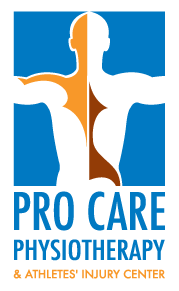



The wrist joint is composed of two bones in the forearm (Radius & Ulna) and eight small bones in the wrist (Carpals). The hand is a greatly complex part of the human anatomy. It is composed of 27 bones including the ones in the wrist:
Different joints are also found in the hand:
Ligaments connect all the bones of the wrist and hand to provide stability.
There are many possible injuries that can occur to the hand and wrist including:
A Colles’ fracture is a “broken wrist”, where the distal part of the radius bone gets fractured. A Colles’ fracture is the most frequently broken bone in the arm. This injury usually happens when a person falls onto an outstretched arm or gets hit on the wrist.
People with osteoporosis or thinning of the bones are at high risk of fractures although it can happen to anyone that takes a fall or gets hit. After the fracture heals, intense physiotherapy is required to regain full motion and strength in the affected limb.
A wrist sprain occurs when the ligaments that connect the wrist bones to the hand bones stretch to far, usually during a fall on an outstretched arm. The result can be small tears in the ligament, or even worse, a complete break in the ligament. Even though falls are the cause of a lot of wrist sprains, you can also get them by being hit on the wrist or by twisting it.
Wrist sprains are usually divided into 3 grades:
Carpel tunnel syndrome causes pain, numbness, and tingling in the hand due to pressure on the median nerve in the wrist. The median nerve and several tendons cross to your hand through a small space in your wrist called the carpel tunnel. The pressure on the median nerve is due to swelling or anything that makes the carpel tunnel smaller, such as:
DeQuervain’s tenosynovitis is an inflammation of tendons of the thumb. It causes pain along the back of the thumb and sometimes extending into the side of the wrist.
Thumb motion may be difficult and painful, especially when pinching, making a fist, or grasping objects.
DeQuervain’s tenosynovitis can be caused by a multitude of reasons, including:
Some people find relief using a brace while treating the injury. Recovery times will vary depending on your age, general health, and how long the symptoms have been present. DeQuervain’s tenosynovitis is usually more resistant to treatment if the symptoms appeared more gradually. For these people, it may take longer to find relief.
Physiotherapists at Pro Care Physiotherapy & Athletes’ Injury Center can help with all hand and wrist conditions after performing a thorough assessment. The treatment may include: